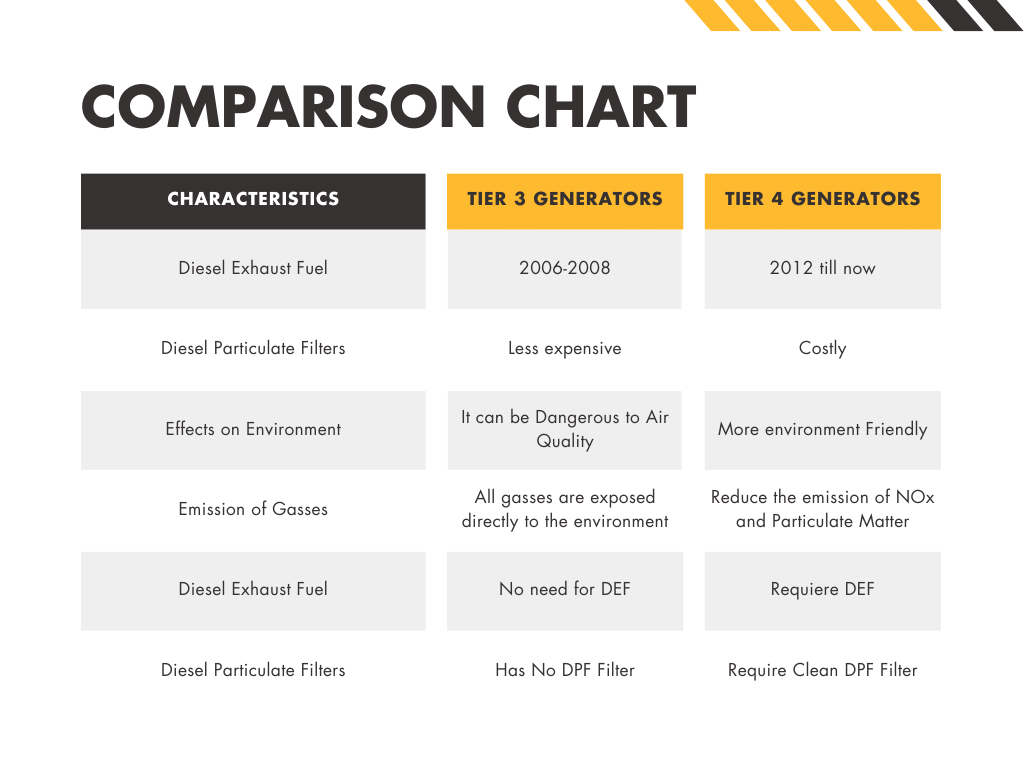Did you know that power outages cause businesses to lose over $30 billion every year?
The manufacturing industry alone can lose up to $6.45 million per hour of downtime, while voltage fluctuations cost an additional $15 billion. In healthcare, the consequences of power outages can be life-threatening. Although we can't always prevent power outages, we can rely on alternative solutions like generators. At General Power, we have rock-solid diesel generators for sale that can help overcome power loss challenges.
Selecting a generator capable of handling lengthy and unpredictable power outages is crucial for your business's success and the environment. Unfortunately, many industries overlook the environmental impact of commercial generators. To address this, the Environmental Protection Agency (EPA) established eco-friendly standards (referred to as tiers) in 1996. These standards aim to reduce particulate matter emissions, nitrogen oxides, and other pollutants from generator engines.
Understanding Tier 3 and Tier 4 Generators
Tier 3 generators were introduced between 2006 and 2008, reducing exhaust emission limits for engines ranging from 27 to 560 kW (50 to 750 bhp). The new design advanced generators, paving the way for cleaner energy.
Tier 4 generators, today's emission standard, are even more stringent and require advanced technology to meet new emission requirements. Introduced in 2008 and hitting the market in 2012, Tier 4 generators reduce nitrogen oxides, particulate matter, hydrocarbons, and sulfur content, although carbon monoxide levels remain similar to Tier 3 generators. These generators play a crucial role in moving towards sustainable energy.
Key Differences Between Tier 3 and Tier 4 Generators
The following comparison table will show the significant difference between tier 3 and tier 4 generators.

How Tier 4 Generators Work
Innovations have led to more efficient and eco-friendly Tier 4 generators. They use a "diesel particulate filter" (DPF) and "diesel exhaust fluid" (DEF) to minimize harmful emissions. The DPF traps soot and ash, while the DEF, a chemical and water mix, is sprayed into the exhaust stream to reduce pollutants.
Why Choose Tier 4 Generators?
Choosing a Tier 4 diesel generator, which meets EPA diesel engine regulations, is always an optimal solution for countless applications in today’s world. Whether you run a construction company, a manufacturing business, a hospital, or a data center, a reliable generator is essential during outages that can cause financial loss.
The following reasons explain why a Tier 4 diesel generator is the best choice for your business:
Environmental Stability
Tier 4 generators emit 90% less particulate matter, nitrogen oxides, and sulfur, making them more eco-friendly than Tier 3 generators.
Advanced Technology
Built with modern technology, Tier 4 generators improve air quality with features like diesel particulate filters. Some models can even be controlled via an App on your phone.
Reliable Backup
Tier 4 generators ensure businesses and even some larger homes continue running without releasing harmful chemicals during power outages.
Redundancy
Tier 4 generators work alongside diesel engines to enhance system efficiency, offering a reliable backup during power outages.
Conclusion
Having an environment-friendly generator is the best choice for preserving productivity and profitability for business owners. While some Tier 3 Commercial Generators are still allowed in some places for certain applications, Tier 4 Final is the new standard and will be here for a long time. At General Power, we carry many types of Tier 3 and Tier 4 Diesel Generators. Feel free to contact one of our Sales Engineers today for more information.


